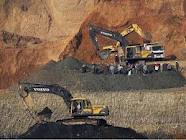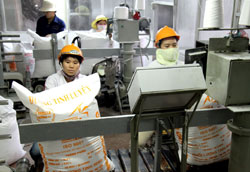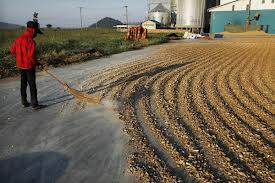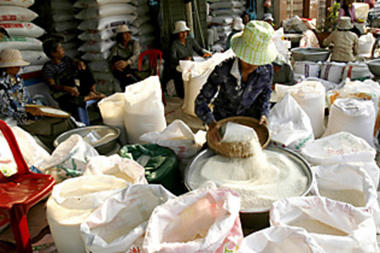Lack of transparency over mining revenue
Lack of transparency over mining revenue
Political activists and watchdog organisations say Cambodia’s US$13 million revenue from the mining sector over the last five years is exceedingly low and that the government must be more transparent.
 |
The claims come after the Ministry of Mines, Industry and Energy (MIME) released its figures on the mining sector this week.
MIME’s data showed that between July 2008 and July 2012, the ministry collected $13,322,288 in revenue from mining activities.
Yim Sovann, a spokesman for the Sam Rainsy Party (SRP), said mine concessions for both local and foreign mine companies were not transparent. He said there were many types of mines on Cambodian land but that corruption meant income was low.
“If we can stop corruption, we can generate more income, many times what the data shows. If we are to provide mine concessions then it must be with complete transparency and all due responsibility,” he said.
“If the government acquiesces to provide mining concessions, they have to find more reputable companies, as many as possible, and arrange for them to participate in a fair auction. Then, the companies have a chance to compete with each other.
“The companies that win should have to conduct an environmental impact study for the concession area.
“If Cambodia does that there will be lots of good companies competing to gain access to the land, and will provide the Kingdom with a suitable amount of time to maximize the income generated.
“However, the government works quietly with some companies, and as a result corruption flourishes and is encouraged.”
Minister of MIME Suy Sem said the revenue came from taxes composed of mining licences, renting licences, exploration licences, and rock, sand, precious stones and finders fees.
“MIME does not have exact data to prove which areas contain what kinds of mines. We don’t have the ability to conduct studies because we don’t have a large enough budget or even enough officials to be able to submit to investors all the information to enable bidding,” he said.
“If an investor applies for an exploration licence, we give them only the land, letting them conduct their own feasibility studies while the two-year exploration licence lasts,” he added.
He said when a company finishes their study, they must provide a report to the ministry. If they want to continue, they are required to purchase another two-year licence and if they stop they have to return the land.
“It does not mean that they take our land, they just get it to conduct their study on it. If they found any good result, they can start to apply extractive licences,” he said.
“So far, there are not any companies that have started, except for the coal-power plant in Banteay Meanchey,” Suy Sem added.
Chairman of Cambodians for Resource Revenue Transparency Mam Sambath said the release of revenue data from extractive industries, especially the oil and gas sector, was very important to prove to the public that the Ministry of Mines, Industry and Energy was transparent.
“It is crucial to release regular revenue figures from the mining industry to the public, although we know that for now companies are mainly receiving only exploration licences, we want the industry to be completely transparent — especially the oil and gas sector,” he said.
“The public needs to be aware of and observe for themselves the revenue the government generates and what the government is doing to develop any sector or build infrastructure,” Mam Sambath said.
“Though the revenue from the mining industry is small, it is another source of revenue for the development of the economy.”
Based on the data from MIME, the government had licenced more than 60 companies, providing more than 160 exploration licences and more than 20 companies with oil and gas licences.
The Cambodian government has granted three mining licences for a total investment of $31.3 million in 2011, according to data from Council for the Development of Cambodia (CDC).
Guangxi Nonferrous Metal Group, from China, entered with total investment of about $21.9 million in the construction of a steel processing plant. China’s Xing Yuan Kang Yeak invested about $8.5 million in a gold mining operation.
The third is a joint-venture between Cambodia and Vietnam. Phu Yang invested $800,000 to exploit metal ore. However, none of the locations of these projects were revealed in the provided data.
The breakdown in tax revenue shows that in 2008, Cambodia received $2,600,000; in 2009, $3,600,000; in 2010, $2,900,000; in 2011, $2,800,000 and by July 2012 $1,200,000.
phnom penh post




















